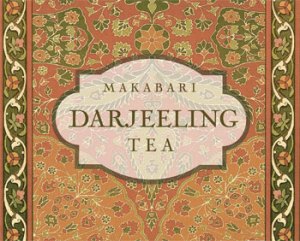 Taking the tea trade back to its country of origin, New Delhi is persuading the Chinese to drink Indian tea as an alternative to the nations indigenous green and red varieties. Making its debut as a high end tea the Indian government is promoting Darjeeling and Assamese tea to China’s luxury class.
Taking the tea trade back to its country of origin, New Delhi is persuading the Chinese to drink Indian tea as an alternative to the nations indigenous green and red varieties. Making its debut as a high end tea the Indian government is promoting Darjeeling and Assamese tea to China’s luxury class.
The Chinese who have never had an affinity towards Indian tea laden with sugar and milk, prefer to have their dose swiveled in hot water several times, with the first batch of hot water meant only to cleanse the leaves and therefore thrown out. As a result of which many tea enthusiasts feel India’s attempt to retail tea to China is lame and made a bit too late, with Sri Lanka, a major tea exporter, already cornering much of the Chinese import market, particularly for black teas.
“This is our very first attempt to showcase Indian tea,” Arun Kumar Sahu, political and cultural counsellor at the Indian Embassy in Beijing, told The Hindu. “China has its own tea culture. Though Chinese have their own taste for green tea and red tea, this is our way to show tea is part of our culture, and that the history of our tea is a global one,” he said.
Nonetheless, Inchin Closer’s opinion is that Indian tea will not go down well with high-end or ordinary Chinese people as they associate several proven health benefits with different teas. Women drink certain varieties of teas and men others, people who want to lose weight drink on kind, while those that want more vitality drink another. Tea isn’t just a break that you have at 4pm like in India, but is a science and an art well practiced in the Middle Kingdom. Its drunk throughout the day, brewed with patience and considered to have healing properties. Unlike India, tea has been an integral part of the Chinese way of life, inspiring poetry, drunk to build guangxi and sipped throughout the working day.
Furthermore, five years ago, Siliguri-based Lochan Tea became one of the first Indian companies to enter into a commercial contract with a Chinese firm to sell Darjeeling tea in China. Makaibari Royal Tea of Darjeeling has also begun selling its products here. Marco Wu, a representative of the company, said five years on, the market for Indian teas was “still small, but growing.”
“In the few years we have been here, the demand has grown, but we are still talking about very small numbers,” he said. In China, green tea is the most widely consumed. The luxury market, which India is targeting, is more diverse, but very price-conscious, Chinese retailers say. Tea is a popular gift in Chinese culture, but the price-tag and brand name count.
According to Chinese historians, tea originated in China and the Chinese tea generally represents tea leaves which have been processed using methods inherited from ancient times. According to popular legend, tea was accidentally discovered by Chinese Emperor Shennong in 2737 BCE when a leaf from a Camellia Sinensis tree fell into the water which he was boiling.
The beverage is considered one of the seven necessities of Chinese life, along with firewood, rice, oil, salt, soy sauce and vinegar. China is the world’s leading producer of tea. According to estimates China’s tea market (off trade) is estimated to be worth USD three billion in 2010.
